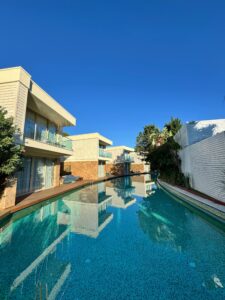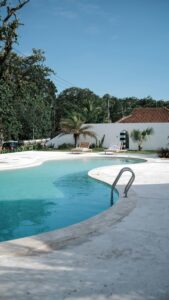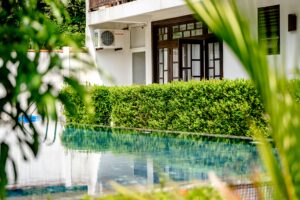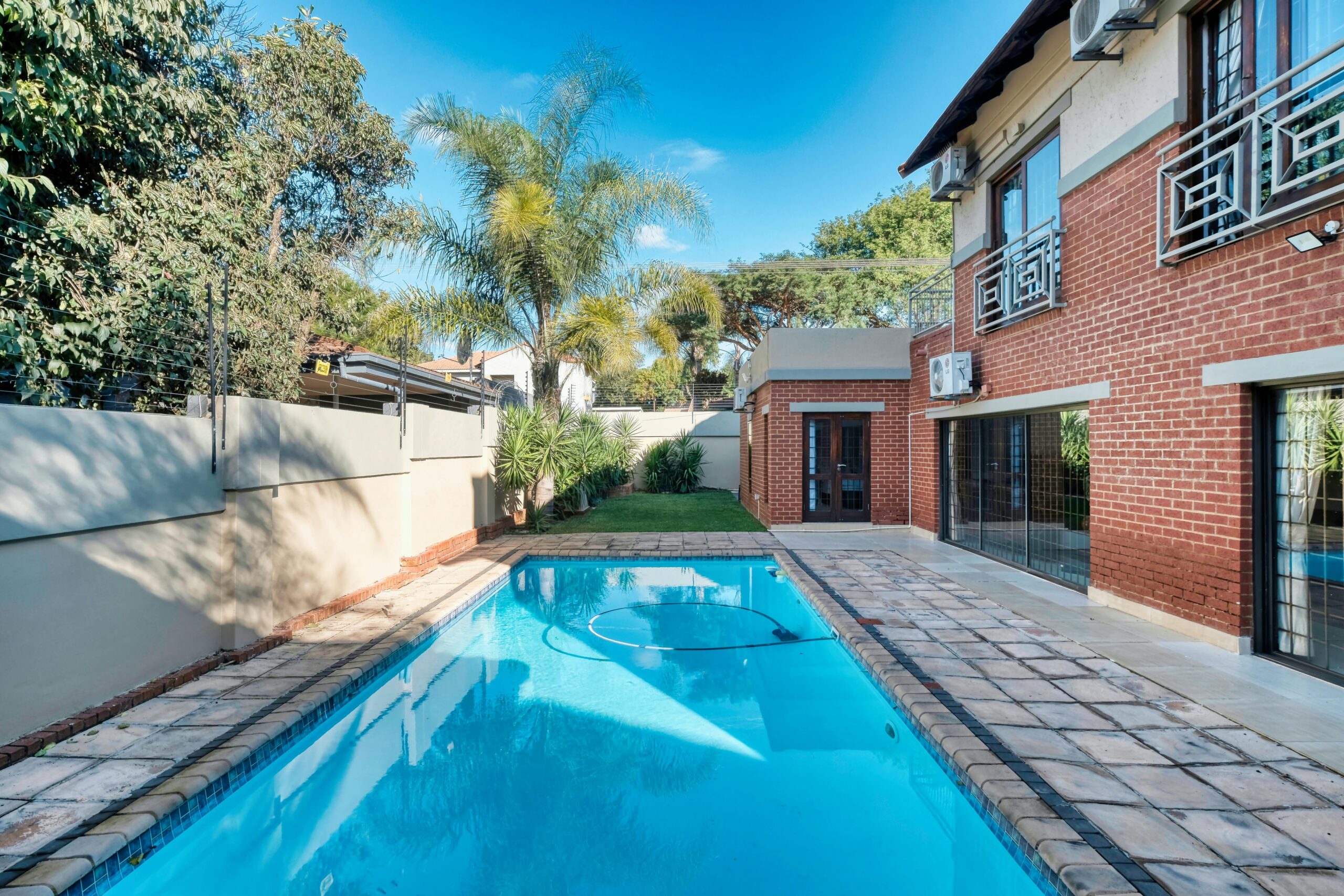Introduction to Residential Indoor Swimming Pools

What Is a Residential Indoor Swimming Pool?
A residential indoor swimming pool is a personal swimming pool installed within a house or within a purpose-specific enclosed building like a pool house or conservatory. An indoor pool has the advantage over outdoor pools, which are subject to weather condition,s as an indoor pool can be used throughout the year. Small lap pools as a means of fitness can be selected by homeowners,rs to large luxury installations, which replicate resort-like experiences. Their difference is in the fact that they form a part of the design of the house and can be comfortable, private, and used throughout the seasons.
Why Homeowners Choose Indoor Pools
There are a few reasons why indoor pools are an attractive option for homeowners. Another significant benefit is privacy-swimming is an activity that does notallow othersy to see inside. Another important advantage is affordability in the form of year-round availability, and heating and ventilation systems help to maintain a comfortable atmosphere even during extreme weather. Indoor pools also encourage wellness and health by offering an easy location to exercise, hydrotherapy, and relaxation. Lastly, they add attractiveness to a property, which ca,n in many cases, add to the resale value, especially in high-priced residential areas.
Basics of Residential Indoor Swimming Pools
Key Features and Components
A residential indoor swimming pool is not a simple body of water but a system that consists of various parts. Key features include:
- Climate Control: Boilers, dehumidifiers, and ventilation units can maintain the quality of air and comfort under control.
- Lighting: Visibility and atmosphere are improved with natural skylights or LED pool lighting.
- Safety Features: Railway, flooring, and covers consist of non-slip features to provide safety.
Types of Residential Indoor Swimming Pools (Concrete, Fiberglass, Vinyl)
- Concrete Pools: The most customized, durabl,e and of long life. Best with special designs, but usually more costly and time consuming to construct.
- Fiberglass Pools: Shells that have been manufactured and, fitted in the ground. They are very fast to install, maintain, yet not very flexible in design.
- Vinyl Pools: Vinyl liners are installed over a frame. They are cheap but demand the replacement of liners after 7-10 years.
Pros and Cons Compared to Outdoor Pools
- Pros: Use all year round, privacy, an increase in home value, and increased control of water quality.
- Cons: High costs of installation and maintenance, space demands, and consumption of power.
Design and Construction of a Residential Indoor Swimming Pool
Space and Location Considerations
It is important to select, the appropriate space. Indoor pools need large ceilings, reinfor,cfloorsor,s and ventilation. Common locations include basements, extensions, or a pool house specially designed. The location should also consider structural integrity and accessibility forthe building.
Architectural and Aesthetic Design Ideas
Design possibilities are nearly inexhaustible. It has sleek lap pools sleekly integrated into modernized living spaces, and the spa-like retreats that include waterfalls, moodlightingg and finish with natural stones. The aesthetic needs to harmonise with the house architecture, be it minimal or rustic, or luxurious.
Building Process and Timeline
The construction process mostly involves:
- Pon averagend Design: Blueprints, permits, and cost estimation.
- Excavation & Structure: Preparation of space and framing foundations and framing.
- Installation of Pool: Installation of shell or liner, plumbing, and electrical systems.
- Final Fittings: Installation of tiles, lighting, heatingg and ventilation.
- Final Checking and Testing: Conformance and safety of use.
Indoor pools are constructed in 3-6 months, depending on their size and complexity.

Cost of a Residential Indoor Swimming Pool
Average Installation Costs in 2025
The reason is that the average residential indoor swimming pool cost will range between 80,000 and 200,000 based on the size of the swimming pool, materials, and features. Custom luxury cars are over 300000.
Factors That Influence the Cost (Size, Materials, Features)
- Materials: Concrete is the mostexpensivet, whereas vinyl provides a cheaper point of entry.
- Features: Add-ons such as spas, automation systems, or waterfalls are cost-adding.
- Climate Systems: Vents, dehumidifiers and heating are necessary and are included in the budget.
Ongoing Maintenance and Operating Expenses
Monthly expenses will be around $300 to $500, which will include the cost of energy and water treatment as well as cleaning. Contract maintenance by professionals can be more expensive but guarantees durability.
Real-World Applications of Residential Indoor Swimming Pools
Luxury Homes and Mansions
Lifestyle features such as grand pools indoors are common in high end properties. They are status symbols but at the same time provide wellness and entertainment. Most of the luxury designs are designed with built in spa, unique tiles and massive glass walls to allow natural lighting.
Wellness, Fitness, and Therapy Use
In the case of health-conscious people and homeowners, the indoor pools promote low-impact exercises such as swimming laps or water aerobics. Therapeutic purposes are also popular with them having a controlled environment in which to offer rehabilitation and hydrotherapy.
Energy-Efficient and Sustainable Pool Designs
New constructions are increasingly considering the use of more environmentally friendly realms such as solar heating, insulated pool covers and pumps which consume less energy. Those save operating costs in the long term, and also comply with sustainable living values.
Residential Indoor Swimming Pool Maintenance
Cleaning and Water Treatment
Indoor pools require fewer cleaning efforts than outdoor pools, but cleaning and chemical balancing remain necessary on regular basis. Manual care can be diminished by automated cleaning systems, chlorination by saltwater, and UV filters.
Ventilation, Heating, and Humidity Control
Correct ventilation eliminates the chance of mold and dampness in the house. Current systems have been integrated with heating and dehumidification to serve optimal temperatures of air and water to offer comfort and guard the building infrastructure.
Safety and Compliance Guidelines
Homeowners are required to adhere to safety measures and include safe covers, fences (where in a pool house), non-slippery surfaces and the local building codes. Adherence will guarantee the safety of the users as well as the security of the property.
Future Trends in Residential Indoor Swimming Pools
Smart Technology and Automation
Technology is simplifying the process of owning a pool through smart phone-controlled heating mechanisms, automated cleaning and water-quality sensors. There is also an increase in smart lighting and built-in entertainment systems.
Eco-Friendly and Sustainable Materials
Sustainability is one way the future is going. Re-used construction material, solar heating and efficient water saving systems are becoming popular. These new ideas minimize the environmental effects and minimize costs.

FAQs
Q1. How long does it take to build a residential indoor swimming pool?
Construction is aided by an average of 3-6 months depending on the complexity of the design, type of materials used and the extent to which new structural changes are necessary.
Q2. Do indoor swimming pools add value to a home?
Indeed, in-door pools have the potential of enhancing property value particularly in luxury markets. They are considered high-quality lifestyle attributes that enhance wellness, entertainment, and exclusivity.
Q3. Do indoor pools require ventilation?
Absolutely. Humidity and chlorine vapors may cause damage to the structure of your home and air quality without proper ventilation. The modern systems are used together with heating and dehumidification to provide a safe and comfortable environment.
Q4. Can an indoor pool be eco-friendly?
Yes. An indoor pool can be made a lot more environmentally-friendly with the help of solar heating, insulated covers, energy-saving pumps, and sustainable materials that will lower the operating costs in the long-term.
Conclusion
Residential indoor swimming pool can hardly be called just a luxury, it is an investment of lifestyle. It is the most convenient, private and wellness-related, still, it should be planned carefully and invested heavily in at the beginning, as well as maintained. An indoor pool is valuable addition to the homeowner who wants to enjoy year round, offer a better workout option and provide a better value to the property. Nevertheless, it is critical to consider the expenses, area needs, and maintenance expenses.

